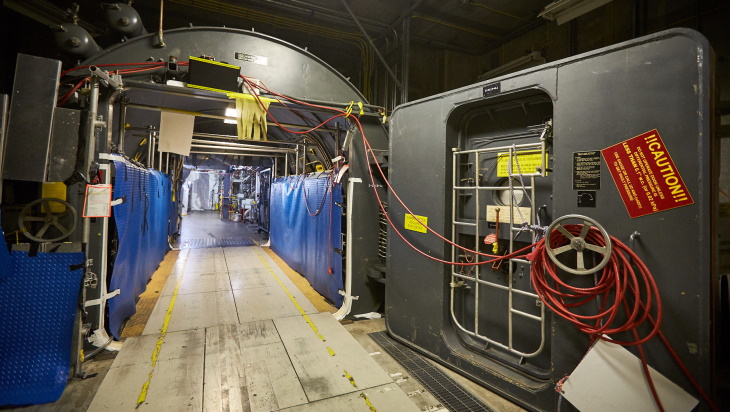Darlington unit 3 ready for disassembly
Darlington unit 3 is ready to begin the next stage of its refurbishment - disassembly - after successful separation of the reactor and its systems from the three remaining operating units at the station. Installation of the final 5-tonne section of steel bulkhead needed for the isolation was completed 10 days ahead of schedule.

A reactor vault equipment airlock at Darlington (Image: OPG)
The process of physically isolating the unit to create a safe and defined work area for refurbishment and protect workers and the plant is known as "islanding". A containment pressure test on 14 January verified an airtight seal around the bulkhead. This marked the end of islanding activities and allows the start of the next segment of work, known as the removal series, in which the reactor is taken apart. This is scheduled to last 311 days.
More than 4000 lessons learned from the refurbishment of Darlington unit 2, which successfully returned to service in June 2020, are being applied at Darlington 3, Ontario Power Generation (OPG) said. Welding techniques and weld quality were identified as areas for improvement, leading to enhanced training and assessment programmes, and the bulkheads were sequenced to streamline workflow and gain efficiencies.
The Darlington Refurbishment Project, which will enable the four Candu units to operate until 2055, will take 10 years to complete. According to an independent report by the Conference Board of Canada, it is expected to generate a total of CAD89.9 billion in economic benefits for Ontario, create 14,200 jobs per year, and increase the province's GDP by an average of CAD1.40 for every dollar spent. The refurbishment of Darlington 3 began in September, after a four-month postponement due to the COVID-19 pandemic. Refurbishment of unit 1 is scheduled to begin in 2022 and unit 4 in 2023. The entire project is scheduled for completion by 2026.
Researched and written by World Nuclear News
- China Institute of Atomic Energy
- Nuclear Power Institute of China
- Southwestern Institute of Physics
- China Nuclear Power Operation Technology Corporation, Ltd.
- China Nuclear Power Engineering Co., Ltd.
- China Institute for Radiation Protection
- Beijing Research Institute of Uranium Geology (BRIUG)
- China Institute of Nuclear Industry Strategy (CINIS)
- China Nuclear Mining Science and Technology Corporation


